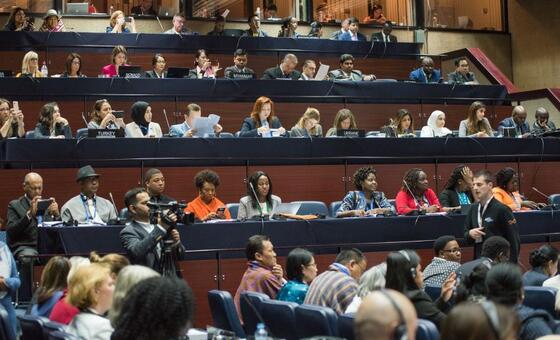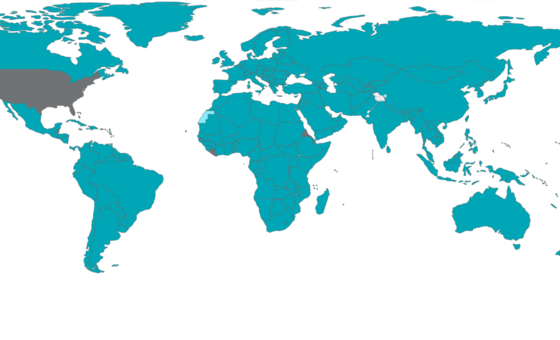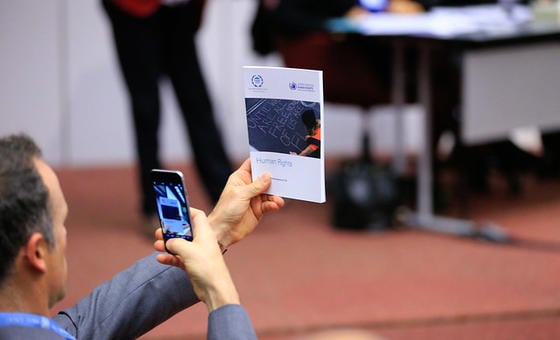- ImpactWe help parliaments to become greener and to implement the Paris agreement.We support democracy by strengthening parliamentsWe work to increase women’s representation in parliament and empower women MPs.We defend the human rights of parliamentarians and help them uphold the rights of all.We help parliaments fight terrorism, cyber warfare and the proliferation of weapons of mass destruction.We encourage youth participation in parliaments and empower young MPs.We support parliaments in implementing the SDGs with a particular focus on health and climate change.
- ParliamentsNearly every country in the world has some form of parliament. Parliamentary systems fall into two categories: bicameral and unicameral. Out of 190 national parliaments in the world, 78 are bicameral (156 chambers) and 112 are unicameral, making a total of 268 chambers of parliament with some 44,000 members of parliament. IPU membership is made up of 180 national parliaments
Find a national parliament
We help strengthen parliaments to make them more representative and effective. - EventsMeetingIndonesiaThe World Water Forum is the world’s largest event on water, organized every three years.-
- Knowledge
Discover the IPU's resources
Our library of essential resources for parliamentsGlobal data for and about national parliamentsLatest data and reports about women in parliamentResolutions, declarations and outcomes adopted by IPU MembersRecent innovations in the way parliaments workThe latest climate change legislation from the London School of Economics' database
A view from Estonia: AI for advanced beginners
The CIP team spoke to Ahto Saks, Administrative Director of the Estonian Parliament, the Riigikogu. We discussed how the Parliament’s first steps with AI have supported parliamentary work. And the initial experience has now developed into new and more complex projects.
CIP: How has the Riigikogu started working with AI, and what have the results been like?
AS: We have a system called HANS that’s based on large language models. It transcribes all the meetings in Parliament (including plenaries and committees) by using automated speech recognition. For the plenary, editors review and correct the AI-generated verbatim text, before it’s published on our website. In committees, staff use the verbatim to manually prepare the committee minutes. The error rate of HANS has been around 5% to date. This can vary depending on what happens in the meetings and who speaks.
CIP: Has there been an organizational impact?
AS: We now have four fewer people – the entire team of stenographers is gone. So AI has replaced four people, and we have digitized what they did. The stenographers were close to retirement, and newly trained stenographers are hard to come by. It’s intensive and repetitive work that young people don’t want to do anymore. So this was one driver for the project.
CIP: What were the other drivers?
AS: Mostly technical. Our previous transcription tool was outdated from a security point of view. And new speech‑to‑text technology has developed better and faster. Previously, error rates could be 40% or higher. They are now lower, as we trained the newer and better large language models with more data. So it was a question of time. Our system can now recognize around 200+ different people, including MPs, ministers, the Prime Minister, and the President.
CIP: What can you say about the ownership and oversight of AI?
AS: We own the code, and offer the tool to everyone in Estonia. It was made for us specially – for parliamentary use. But other organizations have shown interest, such as the Tallinn City Council and Hall. Their systems are similar to ours, and we’re continuing discussions with them. There are no oversight issues, as this type of AI is quite straightforward. The text it produces is either correct or not. And if not, we step in to make corrections.
CIP: Let's talk about the future: what are your next projects?
AS: We are thinking about automated committee meeting summaries based on HANS transcripts. But this is a bit trickier, as it’s generative AI, and needs to produce truthful, balanced and neutral reports. If a member repeated a false statement 20 times at a meeting, it might show up as the truth in AI‑generated minutes.
So we see two tracks. One focuses on developing technology in ‘lab mode’ to prove what the tech can and can’t do. The other allows parliament’s leaders and politicians to discuss AI requirements. In the end, we shouldn’t fear AI, as we’ll always have human eyes in the middle (committee reporters in this instance) to review, edit and produce a final text.





